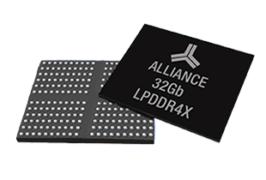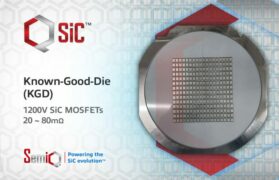The Internet of Things (IoT) boasts a host of rapidly growing technologies that offer the promise of a more connected future. The IoT bridges the gap between the physical world and the digital world; a gap that will grow increasingly smaller in the coming years.
Many of us already use smart products such as voice assistants within our homes, wear smart watches, or rely on parking sensors. Yet these are only a tiny part of what the IoT can become as we move into the future. The tech analyst company IDC predicts that ‘in total there will be 41.6 billion connected IoT devices by 2025’. We take a look at what this future might look like.
Smart cities
Smart cities are cities in which traditional services and utilities are made more efficient by the implementation of digital solutions. Data is collected from IoT services, which gives an insight into the usage of the city’s assets, resources and services, which can then allow the local governments to improve the city and run it more efficiently.
Elements of a smart city can include upgraded water supply and waste disposal, more efficient lighting and heating, and a more interactive city administration. Smart surveillance and streetlights create safer public spaces, whilst smart energy grids allow for a city which operates in a far greener manner. Open data will allow better urban planning with optimised energy consumption.
A significant factor which will facilitate these changes is the implementation of 5G. The greater connectivity 5G affords us will fuel IoT growth as more devices can communicate at much greater speeds, whilst being able to connect at the same time.
Smart homes
From smart watches and health monitors, to smart bulbs, thermostats and smart assistants, we already implement a great deal of IoT systems in our homes, but this will only increase. From connected appliances, ultra-high-speed internet, and more smart home security systems, the IoT has the potential to make our homes more convenient.
All of these ‘smart’ IoT devices collect data on our habits and patterns of usage which, when paired with machine learning, can help your devices ‘learn’ your preferences and adjust themselves in accordance. The interconnectivity of having many smart devices in the home streamlines your experience further.
For older people, IoT may make it easier for them to communicate with loved ones, and remain independent in their own homes for longer. Digital assistants and the ‘chattier’ IoT devices are also a potential means to combat loneliness in older populations.
Smart automotive
The implementation of 5G will allow for data to move faster. As such, the development of driverless cars, and the operation of the connected vehicles already on our roads, will become more viable.
Connected sensors in smart cities will also help reduce road congestion or help drivers easily find parking spaces. By having fast and accurate data collection regarding traffic, your car can ‘talk’ with these sensors and advise you to avoid busy roads. This also has environmental benefits, as reduced traffic can, in turn, reduce the emission of fumes and GHGs.
IoT and climate change
Developments in the IoT sector also have the potential to combat climate change. At present, smart light bulbs, thermostats and plugs can help us manage our electricity use. Tweaking the settings of these items in accordance with the data we collect about our energy usage could help save energy over time.
IoT devices will also be able to help monitor the compliance of a country or specific company with carbon regulations and targets. Sensors can measure air quality, pollutants, and even noise pollution in our environments. Energy usage can also be monitored and adapted as necessary to reduce wastage.
The privacy issue
Whilst the IoT offers great potential, it is surrounded by concerns regarding security. Any smart devices come with the potential for hacking. Vulnerabilities in devices could allow hackers to watch users, track their location and eavesdrop on them. Hackers may also be able to discover and attack connected IoT machinery.
Potential risks include taking control of driverless vehicles and attacks on critical infrastructure; digital attacks with real world consequences. Surveillance is also a worry surrounding the IoT. With the vast amount of data collection occurring, there is potential for an incredibly invasive observation of users.
As a result, it is possible that these concerns may drive regulatory activity and legislation surrounding data privacy. This is something we have already begun to see in recent conversations between Big Tech corporations and various governments worldwide. The UK government has already published a set of guidelines for the security of consumer IoT devices. Those developing routers may also seek new ways to increase their security.
It is clear that the future of the Internet of Things is bright and exciting, so long as safety and security are prioritised!
Author Bio: Jeff Brind is the Chief Information Officer at Easby Electronics, a privately-owned supplier of electronic components with global market pricing, sourcing and supply.










